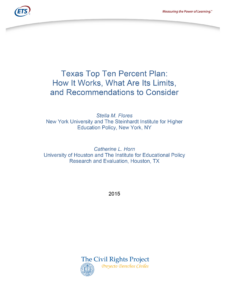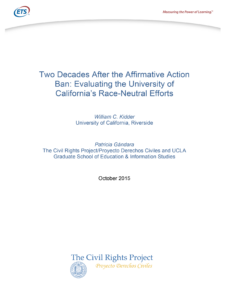The Supreme Court has established the parameters within which universities can practice race-conscious affirmative action for college admissions in a series of decisions beginning in 1978. The key issues concern the educational impact of campus diversity and whether or not it is necessary to give some consideration to students’ race into order to produce a diverse student body in highly selective colleges. The most recent decision, Fisher v. University of Texas II, taken in June 2016, raised the question of whether there was a viable nonracial alternative policy that would produce the level of diversity for universities to realize the benefits of diverse learning experiences that are a central goal of the great majority of selective colleges and universities.
This report explores the issues before the court and the continuing responsibilities of universities under the Fisher decision. This report, comprised of four studies commissioned by a collaboration between the Civil Rights Project and ETS, concludes with the best evidence from the most recent social science studies and research syntheses. It shows that the major proposed alternative policies are far less successful than affirmative action and thus do not meet the Court’s definition of feasible alternatives. This conclusion led the Court to approve affirmative action.
The 4 separate studies can be found below under the More About section.
In compliance with the UC Open Access Policy, this report has been made available on eScholarship: http://www.escholarship.org/uc/item/3vq970qw





